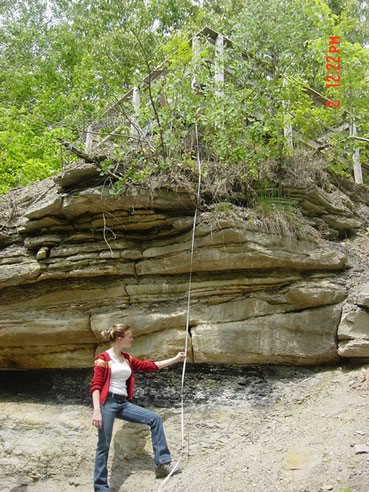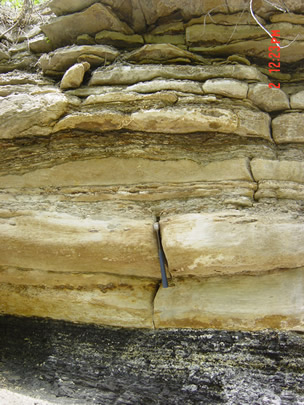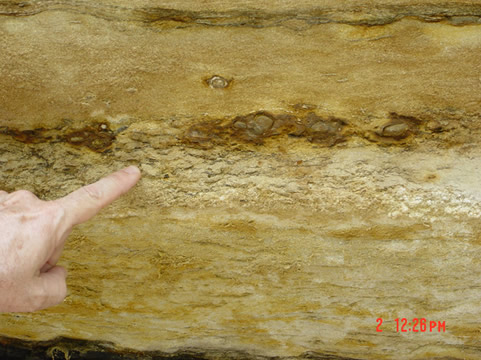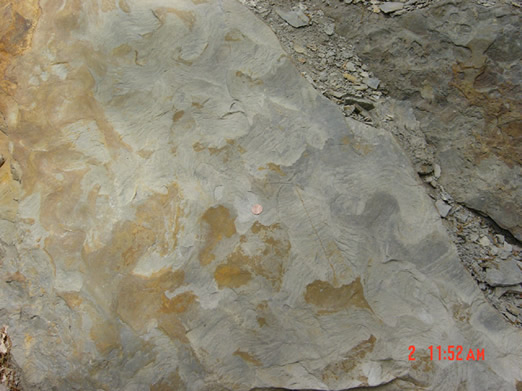Jill and Dr. Bill Neal measure the exposed thickness of the upper sandstone. This is a minimum thickness because the upper part of the rock unit is eroded away at this locality. The layering in Sandstone 2 is much more distinct than in Sandstone 1. Notice in this photo and the one below that the layers are generally several centimeters thick with some variability between layers. Layer thickness is also variable. This sandstone has a reddish-brown to tan weathering color, likely due to iron staining.
(see 3 Stratigraphic Units video - Part 3 from Station 1).
________
In these photos the variable thickness of the sandstone beds in the upper sandstone are evident. This suggests variations in original sand thickness during deposition. This kind of variation is common in fluvial environments in which the sand is deposited by stream processes. Note that the differences in weathering color between the two sandstones are evident here.
This close-up of the upper sandstone shows some of the variability of the layers. The finger points to a coarser layer with some gravel in the center of the photo. Above the gravel layer is a layer rich in iron concretions overlain by a fine to medium-grained sandstone.
Ripple marks are present in Sandstone 2 at this station. This photo shows the top bedding surface of a broken slab of the sandstone. The fine lines represent the truncated tops of the ripple foreset beds. Click here to see the formation of these ripples. The rusty-colored staining on the surface is iron oxide (likely the minerals limonite or goethite) deposited by groundwater during the more recent erosional history of the rock. This helps give the rock its reddish-brown weathering color.
| Tours | Photos | Videos | References | Maps | GL Home | Home |



